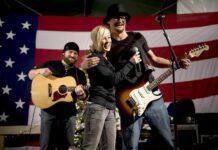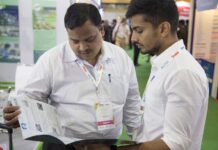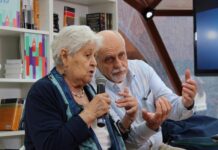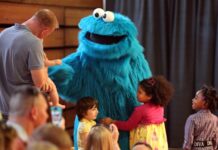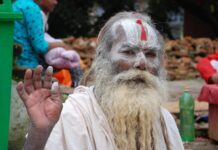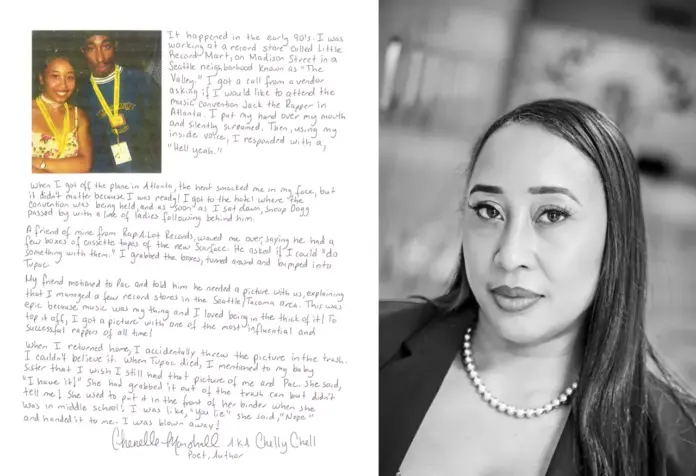This post was originally published on this site
Rachel Crick found the name for her new archival project when she was talking to a potential collaborator. “We were on the phone with Art Chantry, the art director for The Rocket,” she says, “and he said, ‘So what’s the deal here? Are you trying to take photos of as many weirdos as possible?’”
Yes, actually. And with that, As Many Weirdos as Possible was officially born.
Since 2021, Crick and her Weirdo colleagues—producer Pamela Houle, director Ricardo Frazer, and photographers Rosetta Greek, Lance Mercer, Chris Pugh, and Charles Peterson—have been photographing folks that were part of the Pacific Northwest music scene from 1985 to 1995 in front of a local landmark of their choosing, and collecting their handwritten memories and stories.
While much has been written, filmed, photographed, and otherwise documented about what is arguably the most influential musical decade of our region’s history, As Many Weirdos goes beyond the hitmakers and headline names to shine a light on the radio DJs, concert promoters, music critics, and even a pizza delivery guy, resulting in a richer, fuller picture than we’ve seen before.
“I thought this would be 50 photos and stories in a coffee shop,” she says. Now, the collective has photographed more than 300 people, and they’re in the arduous process of compiling all those portraits and stories into what they hope will become a series of coffee table books.
This month, Team Weirdo is hosting two opportunities to get a peek at what they’ve been up to. First, on Friday, October 3, musician and author Nabil Ayers will host an evening of storytelling at Town Hall with Riz Rollins, Marco Collins, Steven Severin, Paul Schurr, Sheila Locke, and Chenelle Marshall. Then, on October 10, folks from the organization will participate in a fireside chat at Hotel Crocodile during Belltown Art Walk, and the hotel’s hallways, lobby, and even a couple rooms, will be filled with Weirdo artifacts.
While preparing for October’s events, Crick shared details about how the project came together and what’s next, now that they’ve captured, well, as many weirdos as possible.
What is it about the 1985 to 1995 time period in Seattle that was especially exciting or enticing for you?
The decade was important to me because that’s when I started watching, that’s when I started historically seeing things going in the direction that would become the time that changed the world. Everything from Bikini Kill to Nirvana. It also was the timeframe that almost every single person who is a member of our volunteer team, we were all working in music during that time, in some form or fashion. The majority of us are Seattle natives, or have lived here the majority of our lives, and we all lived and worked in Seattle during those 10 years in music.
And I want to be really clear that this is Pacific Northwest music history. We’re photographing and capturing stories from people from Olympia to Bellingham. And when I started looking at that, that passageway and the time frame, there was so much going on. There’s the riot grrrls in Olympia and the Beat Happening in Olympia, and they had their own thing going on up in Bellingham. And everything in between—there are bands coming out of Lynnwood, Everett, and Tacoma. This is larger than Seattle.
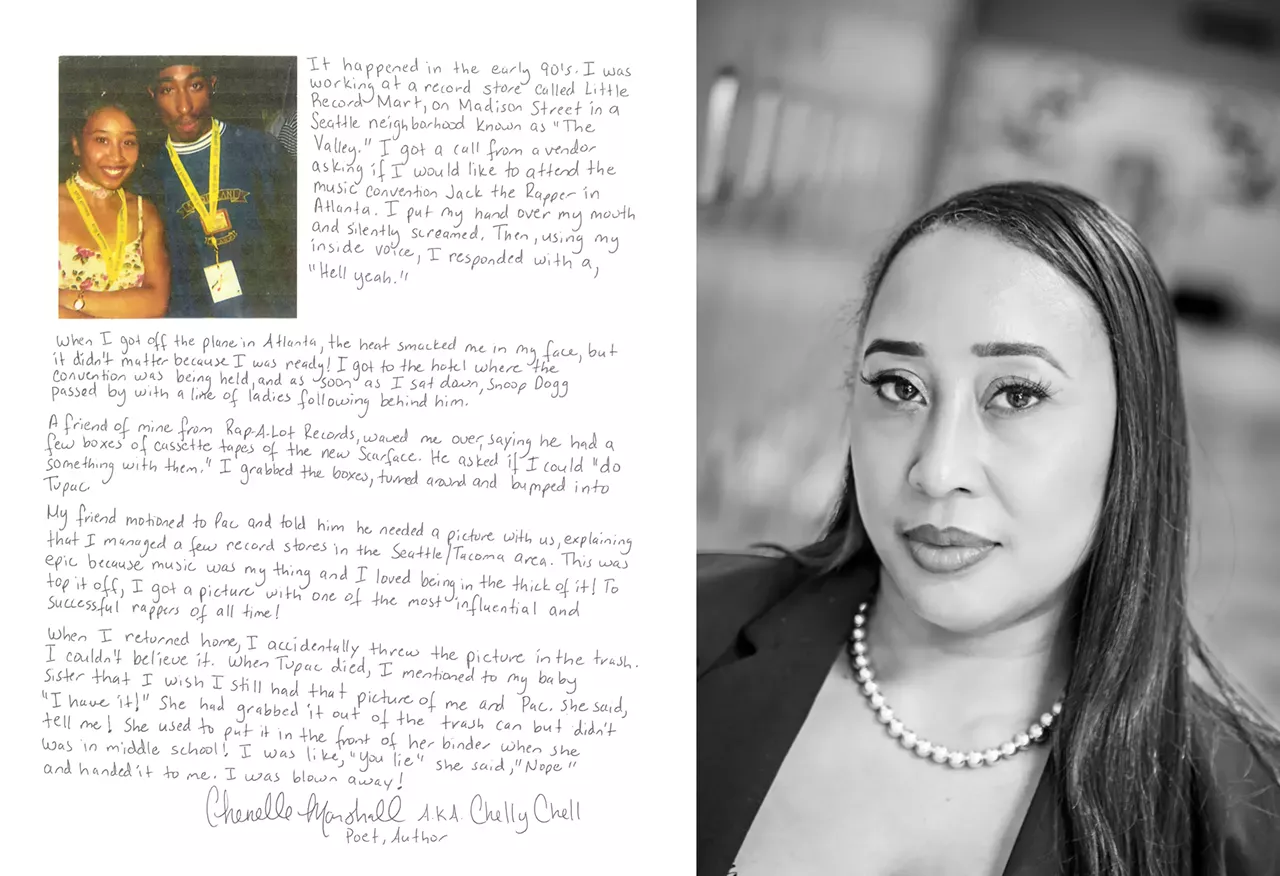
I love that it’s not just rock-focused, too. That’s a huge part of it, but you also have, like, Shellie Hart, who I used to listen to on KUBE 93.3, and Sheila Locke and Sir Mix-a-Lot.
It’s really important to me that this project is diverse in lots of different ways. There was so much going on here, music-wise, you know, Vitamin D and Jake One got their start during that time. And Shellie Hart actually started at C89.5 before she went to KUBE. And then there’s people like Amy Denio, who’s doing jazz, and we even have Greer Grimsley.
It’s not just musicians, it’s engineers, journalists, photographers, bartenders, bouncers. We even just recently did a photo of and got a story from a guy who was a pizza delivery guy—the pizza company that he worked for had a contract with one of the theaters, so when a show would roll through town, he would take the pizzas over to the bands, and he would hang out with them and see the shows.
I just did a portrait of a guy, just randomly, when I was doing a shoot with Rob Stewart from Paisley Sin. He said he wanted to go to this place called Brad’s Custom Auto in Lake City. It turns out that this auto garage used to have a recording studio in it and a rehearsal space in the back. Brad was repairing cars in the front and renting out the back to musicians, and [the band] Zeke recorded there—all these people recorded in the back of this auto garage off Lake City Way!
I’d imagine that that’s not the only time that that has happened, that you’ve had that kind of organic growth just as people started to tell their stories.
[A lot of] it has been people saying, “Oh, did you talk to this person? Did you talk to this person?” Gretta Harley was a huge supporter when we very first started this. She’s got her project These Streets, which focuses on women, and she’s been a huge supporter and advocate for the work that we’re doing. [Former Rocket editor] Charles Cross was huge. He loved the project. He gave us contacts with so many people, and he really helped us a lot, too. So it’s all been word of mouth and support of people who believe in what we’re doing.
Since they were interviewed and shared their stories, some weirdos have died. How does that feel, to ensure that part of their legacy is going to stay around?
It’s been like a blessing, right? Susie Tennant passed away. Tom Hansen passed away. We were lucky to have been able to get a photograph of them and their story before that. And it’s the same with landmarks. When we talk to the person and say, “We want you to be in this,” we ask them to think about a location that still exists in the Pacific Northwest, to have their picture taken. And it’s been interesting watching what people pick. I’ve done a picture of a guy on a rock, literally his favorite rock. Greer Grimsley, the opera singer, he wanted his picture taken in front of Ozzie’s, the tavern up on Queen Anne, and now that classic Ozzie’s sign is gone. Lance Mercer had his picture taken at a building on the Ave, and now that building is gone, so we were also able to capture locations as a part of the work that we’re doing, too.
The plan is to put it all together in a book, right? When do you decide you’ve gotten enough material?
It’s so hard. We have photographed over 320 people. Our goal is to do three books and have there be about 100 [people] in each book and then put them in a box set. But then we need to find a publisher, or we need to figure out a way to raise the money to do it ourselves.
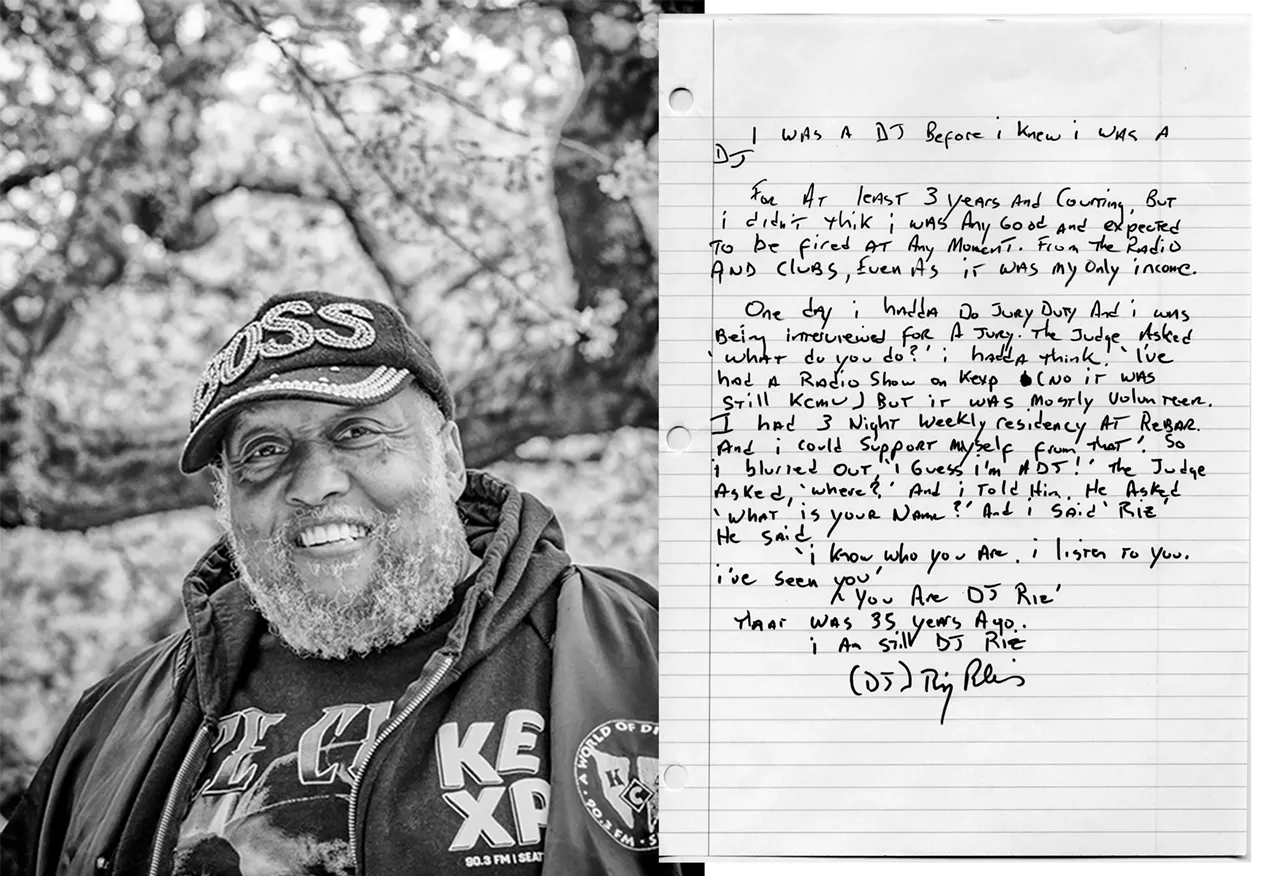
I love that you’re hosting events, and that you have something going out into the world while you’re putting this book together.
That is something that’s been super important to us, community events. It’s more than just a way of getting the word out about what we’re doing; it’s also, coming off COVID, it’s been a way that we could get our community back together. Since I started this project, I have been dreaming of a live storytelling event. I love to listen to the Moth and This American Life. I’d been thinking a lot about how we could turn this into a live storytelling event. Now that we’re at a place where we’ve got a ton of stories to choose from, I went through—it was really hard—and I found six stories that I thought would translate well to being told live. I hope to do this one storytelling event and see how it goes—I would love for this to be an ongoing series.
Without spoiling any of the stories, can you give us a hint as to maybe one or two of the reasons you picked any of the specific stories, like some keywords or something?
[Laughs] Steven Severin, when he told me the story on the phone, I just laughed and laughed, because it has so many crazy elements about the rapper Kool Keith. Kool Keith comes to Seattle, and he has these wacky demands, and so Steven has to send an intern or something out to go and try to take care of Keith’s wacky demands. I’ll just say that it’s food and beverage items. And then, when Kool Keith finally gets back with the intern, a Kool Keith show is chaotic enough, but then just pandemonium erupts. And Paul Schurr, his story is straight up and down, just rock-and-roll lifestyle. It’s like jail and fire and so many things. I love those kinds of stories.
When this is “done,” are you going to go into other decades? Are there other plans
to expand?
One of the ideas that I have, and I haven’t solidified this yet, is I would like to take this model and take it to other cities. This decade is crazy all over the United States. If you think about Bay Area hip-hop, hip-hop in LA, if you think about Minneapolis in general, Austin, Athens, Georgia. It would be really awesome if I could take this model and go to Minneapolis and give a workshop, like: this is what we did, this is what we needed to do to get it set up, here’s what we learned. And then maybe we could also archive with ours, so when you went to our website, you could look at Seattle weirdos, Minneapolis weirdos, Austin weirdos. That would be my dream.



